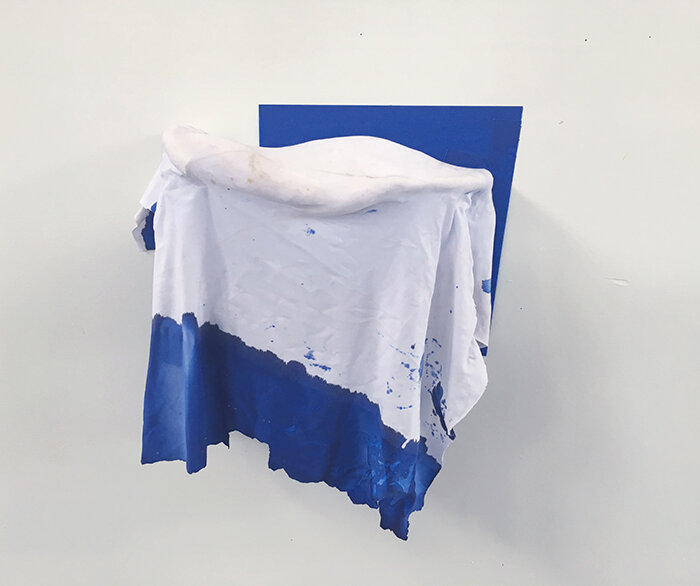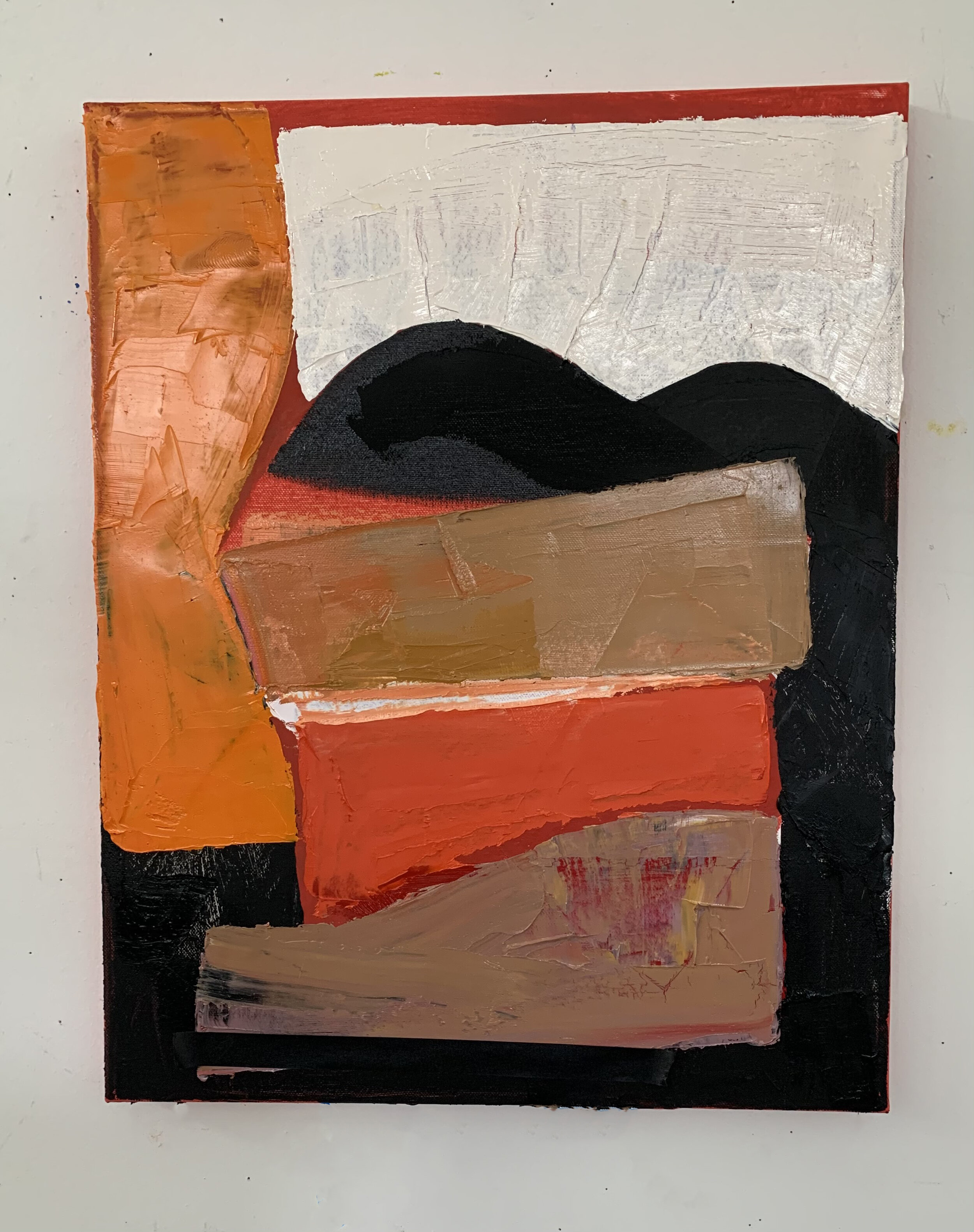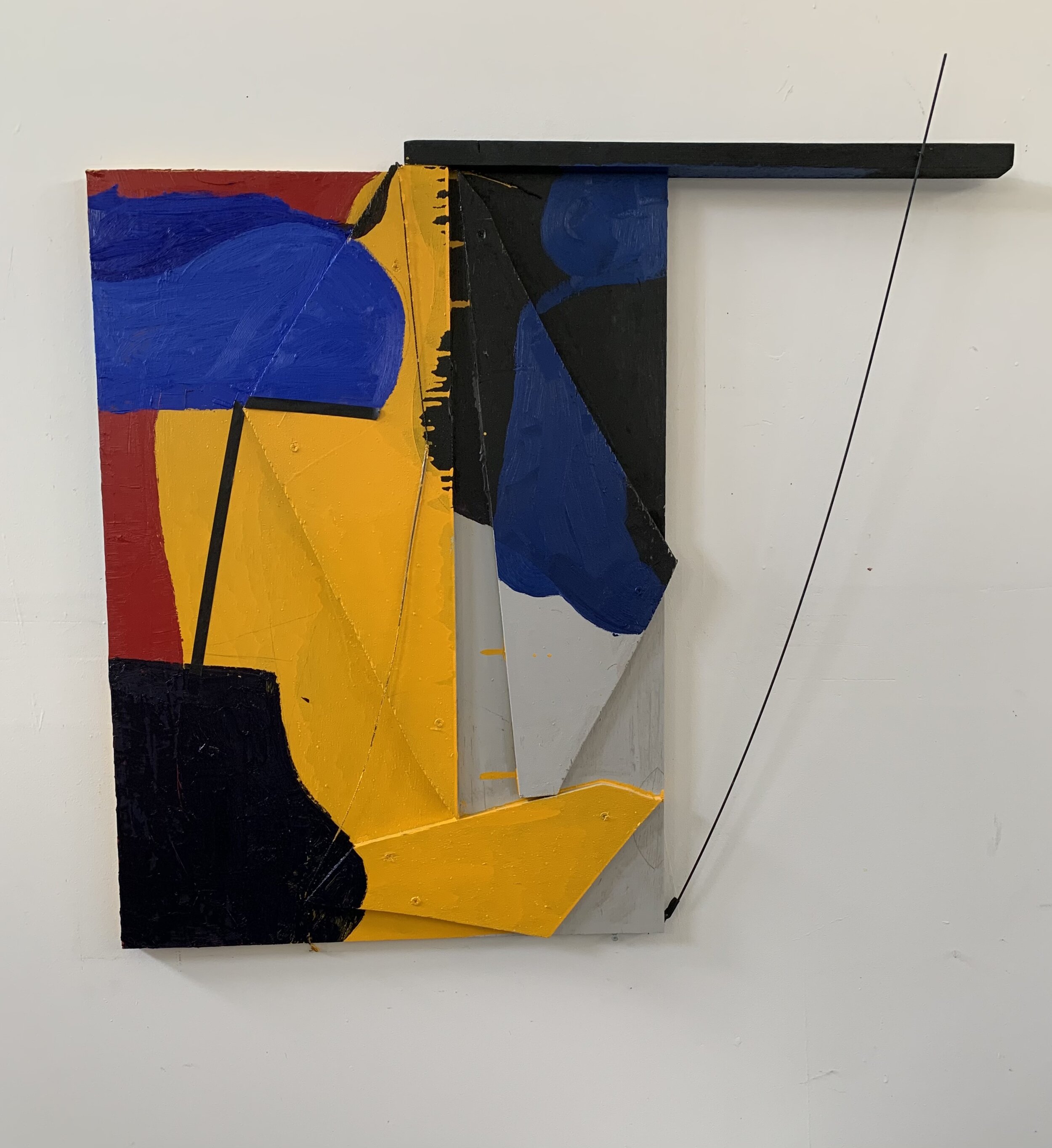A Conversation with Jim Shrosbree
Courtesy of the Artist
Jim Shrosbree is a renowned American sculptor, fine art artist, author, and professor at Maharishi International University. His work has been exhibited widely in galleries and institutions. Jim’s artwork is in the collections such as the Edythe and Ely Broad Museum, Los Angeles County Museum, Detroit Institute of Art, University of Iowa Stanley Museum of Art, Des Moines Art Center, and Daum Museum of Contemporary Art. He has been a visiting artist at numerous universities and art institutions including Alberta University of the Arts, Drake University, Bard College, UC Davis, University of Washington, Penn State University, Cranbrook Academy of Art, and the University of Iowa. He has been awarded grants from the Iowa Arts Council, National Endowment for the Arts/Idaho Arts and Humanities Commission, Pollock-Krasner Foundation as well as a Fellowship from National Endowment for the Arts (Midwest) and the John Simon Guggenheim Foundation. I had the pleasure and honor to ask Jim doe s he have any dreams he has not captured, what he has found some schools can not teach and how can artists remain limitless in their creative process.
UZOMAH: How do you choose titles for your artwork?
JIM: No set routine. I respond to the work and often filter the first responses (sometimes inane) through memories or things that I might be reading. A good deal of the process of finding titles is just playing with language.
U: What are some benefits of being an artist?
J: I am not sure what else I would be good at doing. There is a great deal of freedom. I think the reward is quite internal, especially in the sense that finding parameters to channel such open possibilities builds a kind of resilience that cannot be gained by having it the other way around.
U: How do you stress the importance of being present and mindful for your students in terms of being a better artist?
J: There may be different interpretations of ‘mindfulness’, especially in today’s world.
Attention is important. It is a subtle thing, just to listen. If the mind is all over the place, we can miss so much that is right in front of us. Culturing a strength of vision becomes part of an artist’s life, both visually and conceptually.
“WORB (polka),” 6 ½ x 17 x 5 inches, ceramic, cloth, tacks, 2017
U: What drew you to becoming a professor at Maharishi University?
J: I liked the work of the faculty and the smart way that they could get so much out of so little with their students. I think the thing that loomed largest was the overall support and energy exchange in what I observed. The university offered a community that I feel close to in terms of life values.
“Pfizz (ooo),” 67 x 15 x 11 inches, ceramic, enamel, cloth, music stand, 2016
U: What are some things that you have found that schools cannot teach an artist about creating or understanding their artistic process? How do you want to change that for your students and how?
J: Schools are in the habit of coaching the process, methods with materials or otherwise, and formal or visual understanding of works of art in relation to the world around us. Practicing those aspects of art gives the artist savvy to know the map and navigate the territory. People come at it in different ways and with different timing. It is hard to say what can be taught and what cannot be taught. I have the attitude of putting more weight on drawing out what the student might hold rather than really instructing. If the right conditions are created, the work will flow naturally. Stretching what one knows is also natural. It is a bit unnatural to sit still and not reach beyond what is a comfort zone.
“SAN (bdroop),” 15 x 12 x 4 ¼ inches, ceramic, cloth, ink, acrylic, 2019
U: Do you have any dreams you could not capture in your art?
J: Difficult Q. I guess I am always on the alert for that.
“Double Start,” 16 X 20 inches, oil paint on canvas, 2021
U: Have you found that place in your art where you can create anything that is a reflection of your creative process?
J: The two can be quite close at times. The process of working helps me find out about myself.
U: You received the Pollock-Krasner Grant in 2017. How did that help you focus more on creating without pressure such as with finances and deadlines? How important can getting grants to be for artists in getting more room to express themselves without traditional limits such as monetary issues and being creatively controlled?
J: The Pollock-Krasner grant allowed me to renovate my studio and vitally support the ongoing nature of my work. The versatility and proximity of the situation in which I work have opened new avenues of exploration with little interruption. The Guggenheim Fellowship allowed greater focus on my work and allowed me to take the work to a deeper level. The result has been that painting, drawing, and sculpture has a more fluid relationship, where one process feeds the other.
Residencies are also important because they provide uninterrupted time that has contributed to breakthroughs in my work.
U: What can artists do to remain limitless in their creative process?
J: Each artist is different. I think the interaction between artists is critical for most, maybe at certain times in life more than others. At base, it means discovering some parameters that begin taking us somewhere. Within that, paying attention to what is going on is worth its weight in gold. That means being awake to both the broad and the narrow. There develops a position of strength, of non-attachment to results while still having respect for results. Putting it all on the line is an experience that yields an artifact of that moment where life is instilled and held in an object or an event. That vitality carries to others, to their consciousness. Life to life. In that sense, the work stays alive through the view of others, over time. I think that is how we gauge the agency of work. How does a work of art affect your mind, body, spirit?
“Twice the bigness,” 35 x 35 inches, enamel & oil, string, wire, on plywood construction, 2021
U: What has been one of the most eye-opening experiences you have had from being an artist? How did it make you a better artist?
J: Firstly, discovering art and the passion to pursue it without question. It has been such a natural path. I know what I am. Starting to Meditate ( I practice Transcendental Meditation) as a young artist, opened me up. I noticed I could see, without trying to see, more clearly. It was as if a fog had cleared–everything was brighter and opportunities were presenting themselves to me.
I think that a good part of creating is finding the course of action. It is eye-opening to realize that what is happening is always in relation to something else and not in isolation. In one way things are seen as being on the surface but, on a deeper level, developing a series of relationships emerges out of particular conditions. That stream of lively events continues and facilitates an openness to always be practicing–to be discovering new possibilities as time unfolds new developments. I think that is the basis of global thinking which considers, in a social way, a common thread which we could call love that is within humanity.
U: How important is it to study other artists in finding your own creative process?
J: Art gives us a conversation over and across time. No one artist’s work is not related to another’s work. We learn from others and apply what is there to our time. We discover artist comrades, some that we resonate with most and others that we also learn from. The process of knowing our field has so many enriching aspects but one important thing is finding our way. Where are we in the scheme of things?. It helps to know so we can forget, and then know again in a new way….the cycle goes on that way and each round is part of the rhythm of growth.
For more information about Jim’s artwork please visit his site.





